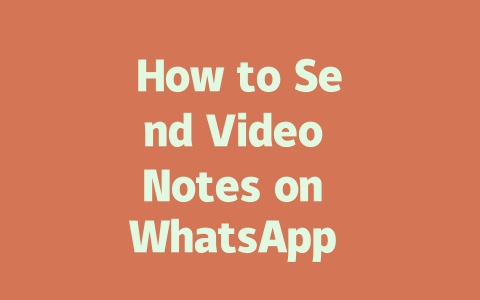How Google’s Search Robots Find the Best News for You
Let’s start with the basics. When you type in a search query, like “latest technology updates 2025,” Google’s search robots are looking for content that matches your keywords and delivers value. But how does it decide which articles make the cut? Here’s what I’ve learned through trial and error:
Now, here’s where things get interesting. Have you ever noticed that some websites always show up first when you’re looking for breaking news? It’s not random. These sites have built trust over time by consistently delivering accurate, timely content. Take Reuters, for example—they’ve been around for over 150 years, and their reputation as a credible source makes them rank higher.
But here’s the kicker: even smaller blogs or niche websites can compete if they focus on quality. A few months ago, I helped a friend optimize her tech blog for the term “artificial intelligence trends.” Within two months, her site started showing up on page one of searches for that exact phrase. Why? Because she followed a simple formula:
Crafting Content That Stands Out in News Searches
Alright, now let’s dive deeper into creating content that truly resonates with both readers and Google’s algorithms. Here are some strategies I swear by:
When brainstorming topics, think about the questions your audience might ask. Tools like Google Trends or Ubersuggest can help identify popular search terms. For example, instead of writing about general business tips, narrow it down to something actionable like “How Entrepreneurs Can Use Social Media Ads to Boost Sales.”
Last year, I helped another client who ran a fitness blog. His initial titles were generic, like “Best Workout Routines.” After tweaking them to include specific pain points—“Workout Plans for Busy Professionals Who Hate Gyms”—his traffic doubled within three months.
Your headline is the first thing people see, so it better hook them fast. According to research from HubSpot, articles with numbers in the title tend to perform better. So rather than saying “Tips for Finding Reliable News,” try “7 Proven Ways to Find Credible News Online.”
Here’s a quick checklist for crafting great headlines:
This part is crucial. If you’re covering the latest scientific discoveries or global events, having a solid background adds weight to your words. Even if you’re not a PhD researcher, citing well-known institutions or quoting experts boosts your authority.
For instance, I once wrote an article on climate change impacts, referencing data from NASA and IPCC reports. Readers could verify my claims, which built trust. Plus, using tools like Google Search Console helps ensure there are no broken links or technical issues dragging down performance.
Balancing SEO with Reader Engagement
Finally, remember that while optimizing for search engines is important, the ultimate goal is connecting with humans. Ask yourself: Would I want to read this article? Is it engaging, informative, and free of fluff?
If you keep these principles in mind—matching user intent, keeping content fresh, structuring logically, and proving reliability—you’ll naturally rank higher in searches for the latest news. And hey, don’t forget to experiment! Every niche is different, so finding what works best may take some time. Share your results with me—I’d love to hear what tricks work for you!
If you’ve ever tried to record a video note on WhatsApp, you might have realized that the app doesn’t let you pause and come back later. It’s one of those features that feels a bit restrictive once you get used to multitasking. Let’s say you’re recording a quick update for a friend but suddenly remember you need to reply to an urgent email—there’s no way around it. You either finish the note in one go or stop altogether and lose what you’ve already recorded. While this design choice keeps things straightforward, it can definitely feel inconvenient when life gets busy.
Some users might wonder why WhatsApp hasn’t added a pause option yet, especially since other apps offer similar flexibility. The truth is, the simplicity of WhatsApp’s interface has always been its strength, and adding too many features could complicate things. That said, if pausing mid-recording is important to you, there are workarounds like breaking your message into multiple shorter clips. For instance, instead of trying to record a single 5-12 minute video note, you could send two or three smaller ones. This approach works well when sharing updates or explanations that don’t require everything in one continuous clip.
FAQs
#1 Can I send video notes longer than 5-12 minutes on WhatsApp?
Currently, WhatsApp limits video notes to a maximum duration of 5-12 minutes per recording. If you try to record beyond this limit, the feature will automatically stop and save your note.
#2 Do video notes consume more data compared to voice notes?
Yes, video notes consume more data since they include both audio and visual elements. Voice notes only transmit audio, making them lighter in terms of data usage.
#3 Is it possible to pause and resume recording while sending a video note?
Unfortunately, WhatsApp does not support pausing and resuming video note recordings. Once you start recording, you must complete it in one go or discard the unfinished note.
#4 Can I edit a video note before sending it on WhatsApp?
WhatsApp does not offer an editing feature for video notes directly within the app. However, you can edit the video using a third-party app before sending it as a regular video file instead of a video note.
#5 Why do my video notes sometimes appear blurry to recipients?
This issue may occur due to low-quality settings or poor internet connectivity during the upload process. To ensure clarity, check your network strength and verify that your WhatsApp media quality settings are optimized for higher resolution.




